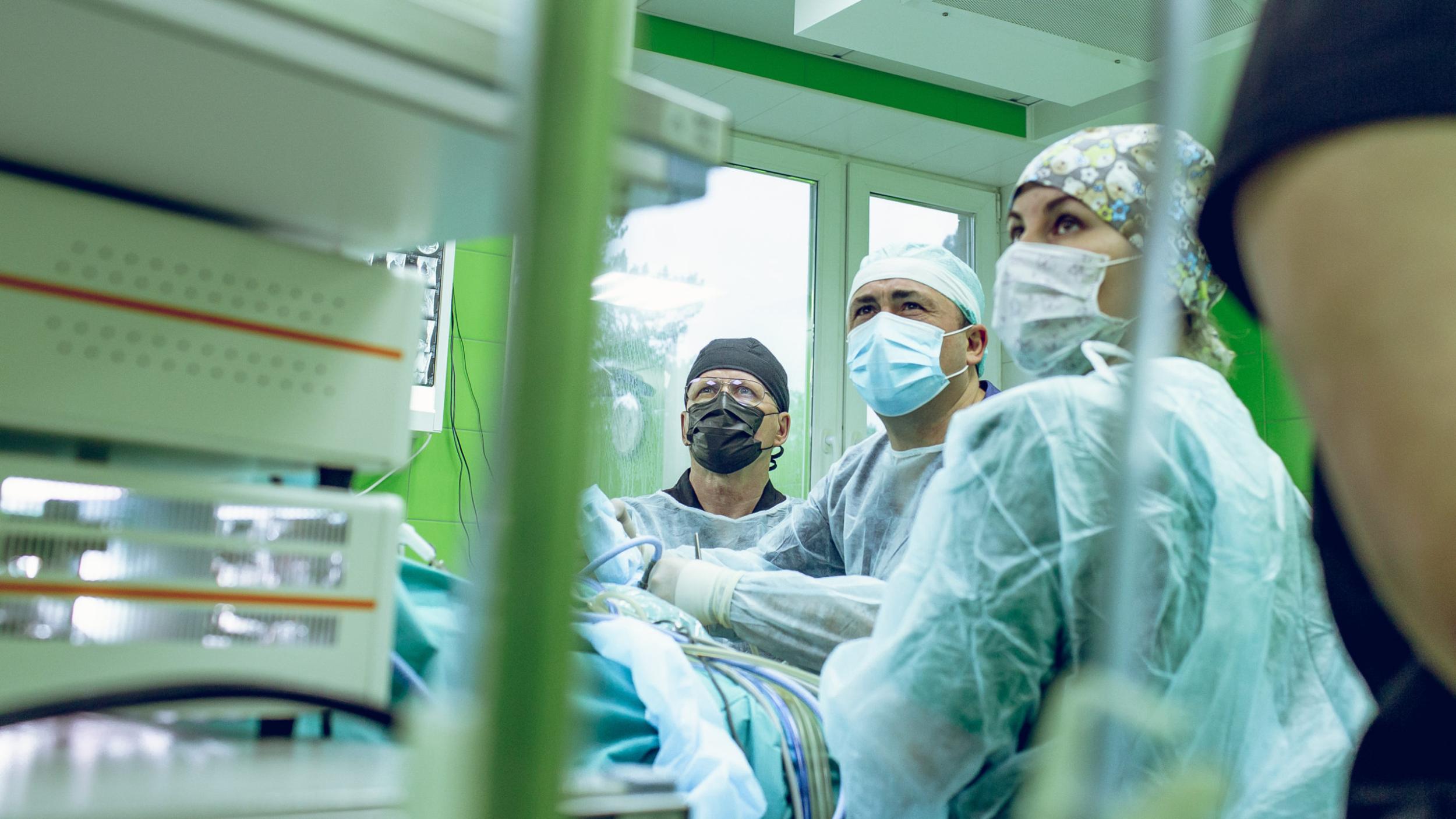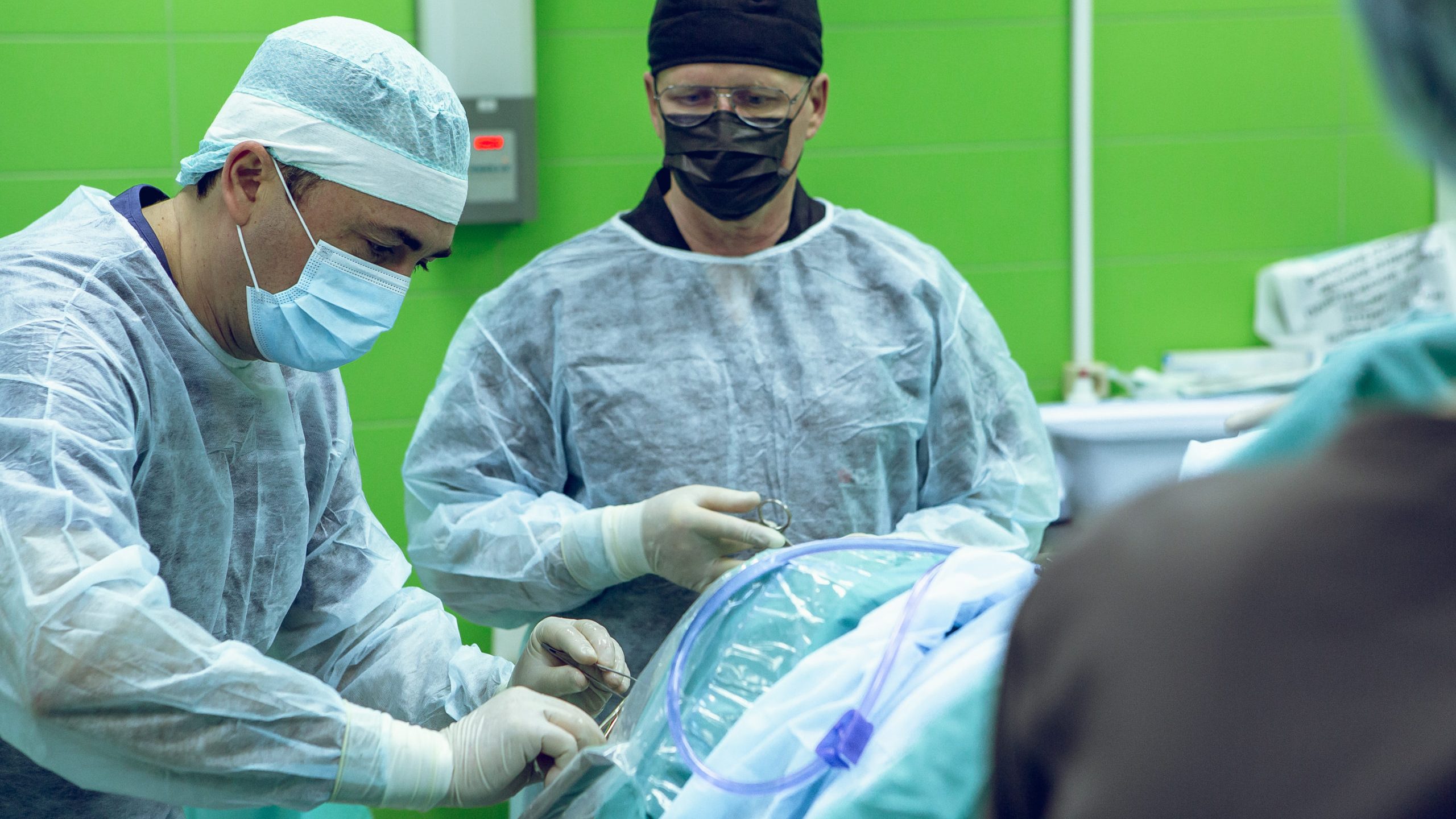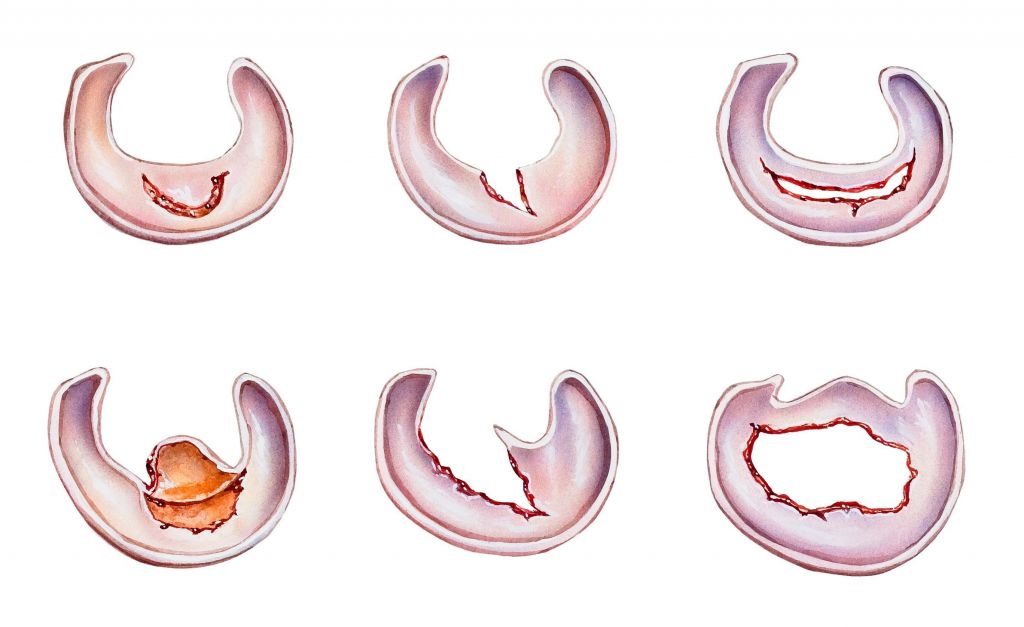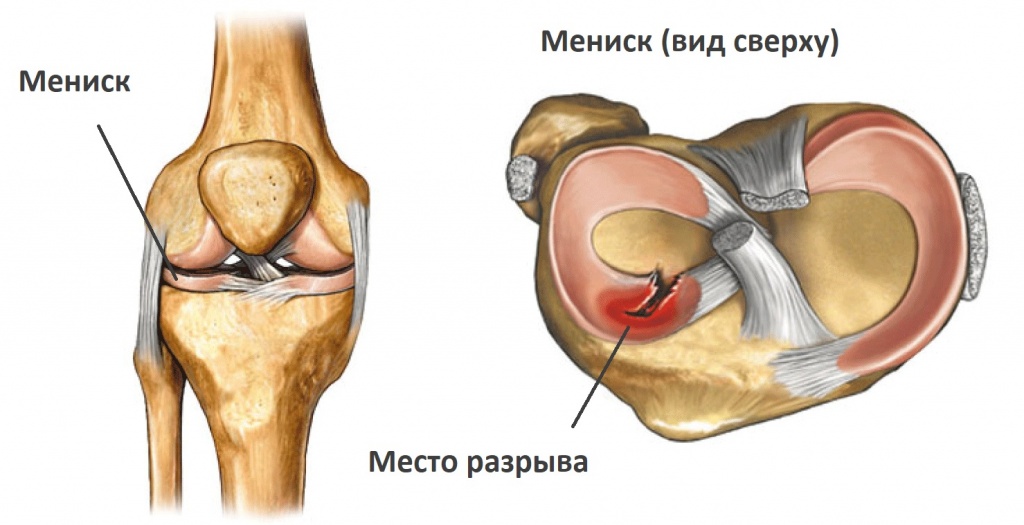Severe pain after minimally invasive arthroscopy surgery is unlikely. If necessary, the pain is treated with modern painkillers. However, there may be discomfort and restricted movement in the operated joint due to postoperative swelling.
- How much does meniscus surgery cost?
- Symptoms of a torn meniscus:
- Symptoms of a torn meniscus:
- Diagnosis of meniscus damage
- Types of arthroscopy
- Therapeutic arthroscopy: rehabilitation of the joint cavity
- Meniscus in the knee
- Conclusion
- Types of arthroscopy
- Benefits of Arthroscopy
- Diagnostic examination
- Indications for surgery
- diagnosis
- indications
- When is endoprosthetics necessary?
- contraindications
- rehabilitation
- Choice of clinic
How much does meniscus surgery cost?
Meniscectomy is a complex surgical procedure in which the doctor removes all or part of the meniscus. The meniscus is a special cartilage structure that cushions the foot and stabilizes the knee. Externally it looks like a thick layer or seal.
Meniscus removal (Moscow) Removal of the meniscus in Moscow usually occurs after complex injuries. It is easily damaged by severe blows, contortions and collisions. When the meniscus tears, it causes acute pain and affects the function of the knee. Conservative treatment is not always effective and often requires complete treatment the removal of the meniscus in the knee joint.
Symptoms of a torn meniscus:
- Soft joint space, accumulation of fluid in the knee area
- Complaints such as 'cracking', 'locking', 'popping' in the knee
- Loss of function and instability of the knee
- Symptoms worsen when bending and putting weight on the knee. Ducking causes severe discomfort and pain.
- One of the leading specialists in arthroscopic surgery, Vakhtang Lomtatidze, a recognized expert in arthroscopic surgery in Russia, who has been trained and coached in many countries around the world, works in our center.
- Minimal risk of complications.
- Affordable prices for meniscus removal
- The costs for the Procedures start at 45,000 rubles.
- Accurate diagnosis (we identify your problem and solve it)


A meniscectomy is only carried out if there is an appropriate indication:
- acute pain in the knee joint associated with a torn meniscus;
- conservative treatment has no effect;
- regular joint locking, limitation of normal joint mobility;
- complete rupture of the meniscus;
- cystic masses in the organ.
Joint function after meniscus removal Joint function is restricted after a meniscus removal. In the first three days, fluid often collects in the joint and annoying pain occurs. After that, these unpleasant symptoms decrease and after two to three days they disappear completely.
Symptoms of a torn meniscus:
- Soft joint space, fluid accumulation in the knee area
- Complaints such as 'cracking', 'locking', 'popping' in the knee
- Loss of function and instability of the knee
- Symptoms worsen when the knee is bent and put under strain. Ducking causes severe discomfort and pain.
- Our center has one of the leading specialists in arthroscopic surgery: Vakhtang Lomtatidze, a recognized expert in arthroscopic surgery in Russia, who has trained and received advanced training in many countries around the world.
- Minimal risk of complications.
- Affordable prices for performing the procedure: Meniscus surgery costs The complex procedure starts at 45,000 rubles.
- Accurate diagnosis (we identify your problem and solve it)


Diagnosis of meniscus damage
Depending on your symptoms and complaints, the doctor will choose the best type of diagnosis or a combination of methods to determine the type of injury, the type of tear and the stage of the injury:
- Clinical examination, anamnesis: complaints, symptoms, palpation, visual inspection.
- Stretching examination of the joint (Landes, Baykov, Roche).
- Rotational examination for joint damage with torsional movements.
- In the presence of. Meniscus tear – MRI i ULTRA SOUND Arthroscopy of the joints gives a good picture of the damage: the condition of the bones and soft tissues, nerves, blood vessels and cartilage becomes visible.
Types of arthroscopy
Specialists perform diagnostic and therapeutic arthroscopies to determine the extent and treatment of the pathology.
It is performed with grafts that are pre-cut by the patient (a thin layer of the hamstring is removed). This does not cause any discomfort or pain after surgery. The transplant is fixed with biodegradable materials. The operation is often performed on the anterior cruciate ligament because it is exposed to high levels of stress.
During the operation, the damaged tissue is removed through an incision up to 5 mm in diameter. A detailed image is displayed on a monitor because the arthroscope is equipped with a miniature camera. After removal, a transplant is inserted. The main difficulty is that this is a delicate work - the further mobility of the ligaments depends on the experience of the surgeon. If the arthroscopy is successful, mobility is completely restored and the affected person can be active and do sports again.
Therapeutic arthroscopy: rehabilitation of the joint cavity
This treatment method, which has been tried and tested for many years, cleanses the interior of the joint cavity of cytokines, fibrin flakes, urate crystals and cartilage slags. For this purpose, an irrigation device is used through which a therapeutic agent is injected under pressure. After the deep cleansing, the specialist will administer an anti-inflammatory agent to enhance the effect. After 2-3 hours, the patient feels relief - pain and swelling disappear and mobility is restored. This is the only option for people who cannot take anti-inflammatory drugs and antibiotics due to kidney and liver failure.
A 5 mm long incision is made in the joint space of the knee joint in order to insert the instrument and make a comprehensive diagnosis. With the help of the arthroscope, the specialist carries out a follow-up examination:
- Synovial sheath – vessels, folds and shades of color are examined.
- Thigh area – the degree of deformation (depth of fractures, area of necrosis, density of cartilage tissue) is assessed.
- Medial meniscus – looking for defects in the tibia, meniscus and articular cartilage.
- Anterior cruciate ligament – the synovial sheath and tensile strength are examined.
The medial and lateral pockets, the joint space, the posterior cruciate ligament, and the fatty area of the joint are also examined. The surgeon uses a probe with a pen to check the density of the tissue, which is not uncomfortable for the patient.
Meniscus in the knee

recovery and rehabilitation
After the meniscectomy procedure The rehabilitation phase is quite demanding. The anatomical structures of the knee joint do not require excessive protection and rest during healing.
In the first week after surgery, recovery is initiated by gradually putting weight on the knee with crutches. Early goals after surgery: control pain and swelling, maximize range of motion of the knee, and restore weight control while walking. The limitation of the load depends exclusively on the patient's feelings and individual characteristics.
Further rehabilitation includes cold, ultrasound therapy, friction massage, joint mobilization, calf raises, step-ups, stretching exercises and an exercise bike. As soon as the wounds have completely healed, hydrotherapy (exercises in the swimming pool) begins.
The following 3 weeks are all about normalizing your gait and increasing the range of motion of your knee. Intensive muscle strengthening and balance exercises are performed around the third week.
A return to sports and full physical activity is recommended when quadriceps muscle strength has reached 80 % of the healthy state before surgery. However, exercise is only recommended when the muscle strength of the affected limb has reached at least 90 % of a healthy state.
Typically, patients return to work after 1-2 weeks, to sports after 3-6 weeks, and to competition after 5-8 weeks.
Please contact our specialists or ask your trauma orthopedist for a second opinion on the recommendation already given.
Conclusion
So the price of knee arthroscopy varies greatly depending on the location and comfort of the patient. In Moscow and St. Petersburg, the procedure in state clinics is cheaper than in private institutions. Treatments and examinations abroad are significantly more expensive, but Israel is the leader in this price range. Inexpensive knee arthroscopy with maximum quality of service is possible in clinics in the Czech Republic.

Types of arthroscopy
Modern arthroscopy is a good alternative to classic open surgery, which is performed on various joints. The most commonly performed procedures include:
- Arthroscopy of the knee joint;
- arthroscopy of the shoulder joint;
- arthroscopy of the hip joint;
- arthroscopy of the wrist;
- Arthroscopy of the elbow joint;
- Arthroscopy of the ankle joint.
The operations performed at NCC No. 2 (Central Clinical Hospital of the Russian Academy of Sciences) provide a radical solution to the problem. This is achieved on the one hand through the most accurate diagnosis possible and on the other hand through the high professionalism of our surgeons and the equipment of our operating rooms with the latest technology.
Benefits of Arthroscopy
This type of operation is currently the most minimally invasive and does not require immobilization in a cast. Thanks to the procedure, the patient recovers much faster and can return to his or her normal daily life after just four to six weeks, and no scars are left on the skin around the joint.
For the surgeons of NFP No. 2 (Central Clinical Hospital of the Russian Academy of Sciences), arthroscopy is not complicated and takes no more than 40 minutes. It is performed under general anesthesia (intravenous) or spinal anesthesia (epidural). Before the procedure begins, the doctor speaks with the patient and explains to him what procedures will be carried out.
First, the skin area is treated with an antiseptic and the doctor makes a small incision, no more than 5 mm long. The joint cavity is filled with a special fluid, and then all necessary procedures are carried out using special instruments. An image of the joint is displayed on a computer monitor so that the surgeon can assess the condition of the joint. At the end of the procedure, the fluid is pumped out and the instruments are removed. The wound is treated with antibiotics and a pressure bandage is applied.
Diagnostic examination
The medial (internal) component is the most vulnerable to injury because it is anatomically less mobile than the opposite (external) meniscus, so it is most exposed to unfortunate movements, hard blows, kicks, and abnormal rotation of the leg around the knee. Undoubtedly, the lateral component can also suffer an unpleasant fate, but observations show that it is three times less likely to be damaged. Surgery on the meniscus in the medial knee joint is therefore performed more frequently.
Damage to the fibrocartilage tissue can be recognized by sudden, severe pain and a characteristic cracking sound. Also at the bottom of the fracture you can find:
- A sharp (localized) stabbing sensation when moving;
- A decrease in the ability to move the limb;
- an impairment of the motor function of the knee;
- Difficulty getting around, especially climbing and walking stairs;
- Painful cracking and subsequent locking of the knee (limited movement);
- local swelling, inflammation and local increase in temperature.
Important!!! All cartilage injuries must be treated without fail! On your own you cannot make an accurate diagnosis, you can only suspect that there is a problem with one of the menisci. Only a specialist diagnostic examination by an orthopedist/traumatologist can confirm or refute your suspicions.
The specialist first listens to the patient's complaints, carries out a visual and tactile examination, checks the range of motion not only of the knee joint but also of the hip, assesses the pain factor through controlled pain induction and examines the muscle tissue for its ability to conduct stimuli. Any initial findings suggestive of an obvious meniscus problem must be supported by effective diagnostic imaging to determine
- where the lesion is concentrated;
- how large the affected area is;
- the direction and form of the damage
- whether surrounding structures (ligaments, joint capsule, etc.) are affected.
Indications for surgery
Complete removal of the knee meniscus is essential if the diagnosis reveals a tear of most of the body or fragmentation of the cartilage layer. Fortunately, this is extremely rare. The predominant organ-sparing operation consists of a partial removal of the knee meniscus, ie a resection of only the non-vital part. As for conservative medicine, it is well suited to the treatment of minor fiber tears, microtraumas and structural degenerative/discopathic changes, as long as these do not lead to impingement and instability of the joint.

According to doctors, patients do not always end up in the hospital immediately, but years after an injury. And what seemed like a simple bruise before turns into serious complications after a while. Because the upholstery cushion does not have a sufficient network of blood vessels, there are hardly any, and tears in some areas cannot heal on their own - they either have to be cut out or stitched up. Meniscus surgery, which is useful when the injury is recent to increase the chances of complete recovery of motor function, has the following indications
- Presence of a vertical crack along the midline;
- Impairment of transverse or longitudinal integrity;
- an anterior lobe-shaped tear (tongue);
- multiple lesions;
- Detachment of a fragment of cartilage from the main plate;
- Overlap of the meniscal cartilage;
- severe fractures of structures;
- Presence of cystic collections.
Loose parts of the meniscus or torn pieces of cartilage that are permanently trapped between the joint bones are a real disaster for the movement support function and the health of the joint surfaces. Osteoarthritis is guaranteed if the knee meniscus or its pathological fragments are not removed in a timely manner. And neglected osteoarthritis is a direct path to disability. Therefore, experts advise not to tempt fate, but to visit a trauma center, at least initially.
diagnosis
The diagnosis is made after a thorough examination. The trauma surgeon interviews the patient, asks for a detailed description of the mechanism of injury, and then performs an examination with clinical tests.
The functional activity of the injured knee is compared to that of the healthy knee. An MRI scan is always performed to confirm the diagnosis and rule out other injuries.

indications
The most important requirements for meniscus suture surgery are a small knee tear and the preservation of sufficient viable tissue in young patients. It should be noted that the knee joint is a complex anatomical unit and the indication for meniscus suturing is made individually after a thorough examination and imaging studies (magnetic resonance imaging of the knee, preferably 3 Tesla).
The meniscus suture is a minimally invasive, safe procedure. The risk of complications and damage to healthy surrounding tissue is reduced to a minimum. These factors ensure a favorable short rehabilitation period, elimination of pain syndrome and maximum restoration of mobility compared to other treatment methods. The long-term prognosis with meniscus preservation is statistically better.
When is endoprosthetics necessary?
The clear indications for knee arthroplasty arise from problems such as:
- post-traumatic arthritis;
- Rheumatoid polyarthritis;
- Degenerative-dystrophic diseases;
- Abnormal bone fusion;
- Tumors that interfere with the normal function of the joint;
- Damaged ligamentous system of the knee joint with significant changes at the joint ends of the bones.
Joint problems often occur as a result of osteoarthritis, arthritis, gout or frequent trauma. In such cases, the surgeon's recommendation for an endoprosthesis is also an objective recommendation.
contraindications
Factors that prevent a patient from undergoing an endoprosthesis can be divided into psychological, that is, the patient's unwillingness to undergo surgery, and physical factors. The latter include:
- Cardiovascular problems;
- presence of bacterial inflammation in the body;
- Blood clotting problems – thrombophlebitis, thromboembolism;
- infectious processes in the area of the knee joint;
- Bone or cartilage dysplasia (e.g. in pediatric patients).
Risk factors may include immunological abnormalities, neurological and psychological disorders.
rehabilitation
The duration of the rehabilitation period affects the overall cost of treatment after removal of the knee meniscus.
Rehabilitation includes functional rest of the lower extremity immediately after surgery, treating sutures with an antiseptic solution to prevent infection and, if necessary, prescribing anti-inflammatory and hemostatic drugs. While the tissue regenerates (heals), the doctor prescribes special exercises to prevent contractures (connective tissue adhesions) and rapid adaptation of the knee to functional loads.
The duration of the rehabilitation period depends on the type of procedure. After an arthroscopic meniscectomy, recovery usually takes several months.
Choice of clinic

Orthopedic traumatologist Yuri Konstantinovich Glatskov
Diagnosis of pathological conditions and subsequent removal of the meniscus are carried out in highly specialized medical clinics, the focus of which is the provision of orthopedic and traumatological services. Some general medical facilities also perform these types of procedures, although the quality of the services provided may be lower.
Removal of the knee meniscus is a major surgical procedure, on the quality of which the complete restoration of the function of the lower limbs depends. When choosing a clinic that offers quality services, several criteria should be taken into account, including the facilities available, the experience and professionalism of the doctors, and patient reviews that can be found on the Internet. Your doctor, who is usually well versed in the options available at different medical facilities, can also help you choose a clinic.
Read more:- How much does knee surgery cost?.
- How much does meniscus replacement surgery cost?.
- How much does shoulder surgery cost?.
- How much does shoulder dislocation surgery cost?.
- How much does bunion surgery cost?.
- How much does a shoulder prosthesis cost?.
- How much does a rib removal cost?.
- How much does a hip prosthesis cost?.
